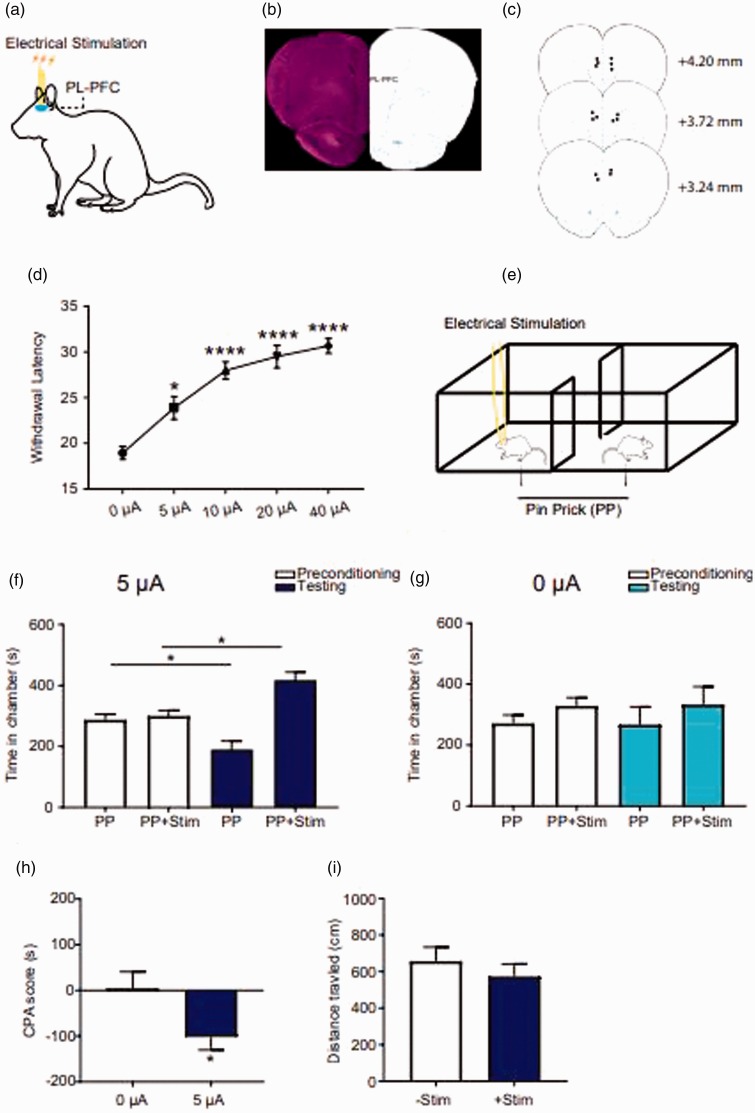Figure 1.
Low-frequency electrical stimulation in the PFC relieved pain in naive rats. (a) Schematic of the electrical stimulation in the PL-PFC. (b) Histology showing the location of tetrodes in the PL-PFC. (c) Schematic showing the intracranial electrode sites. (d) Low-frequency (2 Hz) electrical stimulation of the PL-PFC increased the latency to paw withdrawal latency during Hargreaves’ test across a range of stimulation intensities, n = 8; p = 0.0156 (baseline vs. 5 µA), p < 0.0001 (baseline vs. 10, 20, or 40 µA), one-way ANOVA with repeated measures and Bonferroni posttests. (e) Schematic of conditioned place preference protocol. During the conditioning phase, one chamber was paired with the noxious mechanical stimulus—PP, coupled with simultaneous electrical stimulation of the PL-PFC, the other chamber was paired with PP only. (f) Rats displayed preference to the chamber associated with electrical stimulation in the testing phase, n = 7; p = 0.0124, paired t test. (g) Rats showed no preference to the chamber associated with sham electrical stimulation, n = 5; p = 0.9095, paired t test. (h) 2-Hz electrical stimulation in the PFC provided relief of aversive response to acute pain, as demonstrated by the decreasing CPA score. n = 5–7; p = 0.0435, unpaired t test. (i) Electrical stimulation of the PL-PFC did not alter the locomotion. n = 5; p = 0.4455, unpaired t test. CPA: conditioned placed aversion; PP: pin prick.

